Product Reviews
I Heart RC Hobby is your source to learn more about airplanes, drones, etc. We'll try it before you buy it!

I Heart RC Hobby is your source to learn more about airplanes, drones, etc. We'll try it before you buy it!

Learn tips and tricks from the experts that will help you get the most out of your Remotely Controlled planes, drones, etc.

The second half of my day at CES was spent in the drone section. Wait…let me rephrase that. CES is one big drone section, sprinkled with other stuff. People are finally getting it! If companies aren’t selling drones at CES, there is a pretty good chance that what they sell can be used for drones. Although the look is much more polished than it was a few years ago the innovation was mostly in the sensors and the utility. I didn’t see any earth shattering technology that filled a technological hole in the drone industry.

The Mota company has drones that look like they were inspired by the Parot Company, and others that are a rip of of a DJI Phantom. It’s a stylish and sexy product in black.
Codrone has an interesting little product that allowed the user to customize the drone into wheeled vehicles, or quadcopters and a few other variations. The setup also allows the user to learn code for programing the drones. It’s a nice way for children to learn and grow with drone technology.
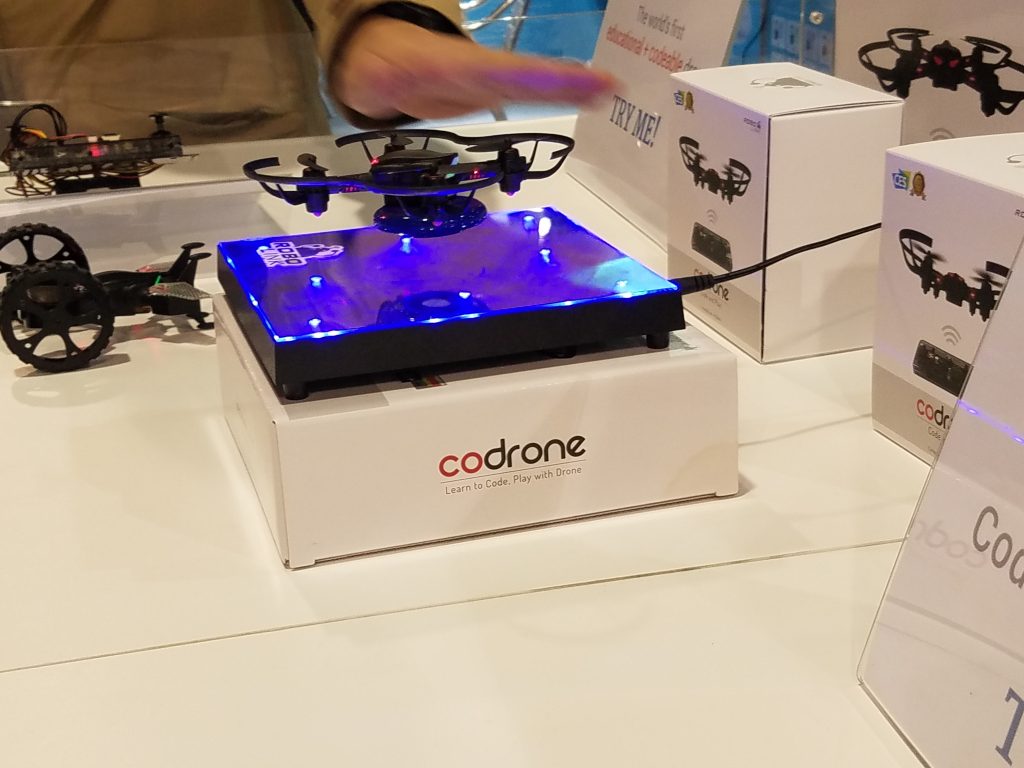
Lego is also joining in the drone and robot business. 

With so much drone technology coming from China, you end up with some really strange company names coming from poor translations.



I hadn’t seen this body style yet.


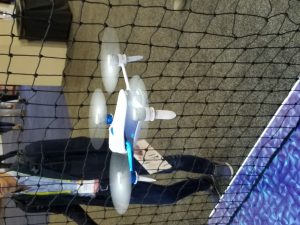
Getting more on the industrial side of the house.
This years CES featured more utility coming from the drone industry. I can only imagine this is a response to the FAA opening the door for commercial use of drone. Check out this crop dusting drone below. 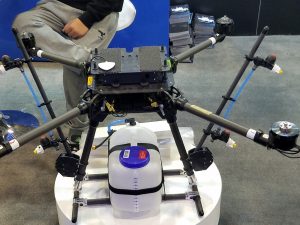


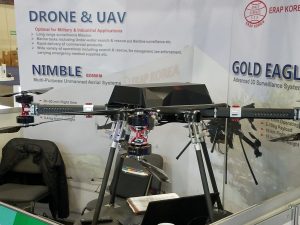






Still lots of consumer grade drones at CES. I guess those who thought drones were a flash in the pan, something that would be big for one Christmas and then gone, are now realizing that drones are cool and they have to have one. 


This one isn’t on the market yet, but they are boasting 57 MPH speeds.

Now it’s time to make drones aquatic.
Racing drones are a growing niche within the drone industry. 
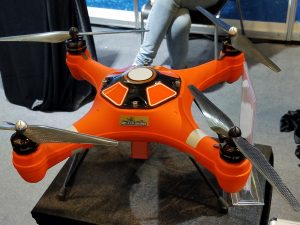
Radio control airplanes…plane and simple.
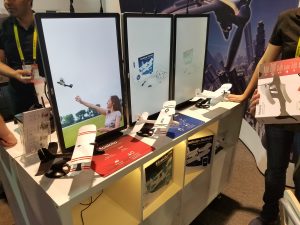





The moment you’ve all been waiting for… DJI presents…


A really cool paint job!





Ehang released their 184 at last year’s CES, I didn’t hear of any significant update on it’s progress.




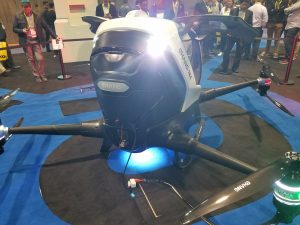





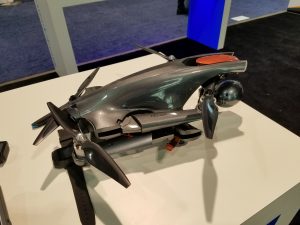





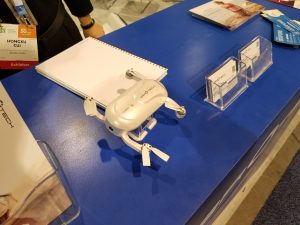








The Hover camera is cooler than I thought.

Something about this makes me say… “Wow, that’s cool…” I think it’s because they made all the parts. i.e 3D printed wheels, etc.
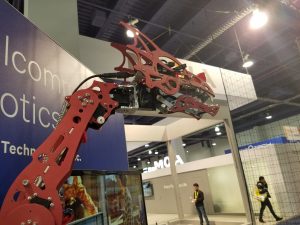


The Lily Drone never made it to production, but the rip off version is here!






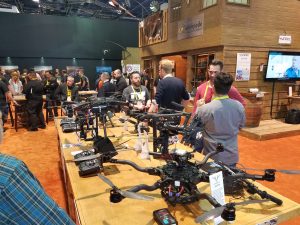




I had to start my CES experience at Mark Forged, where I met the legend himself “Greg Mark,” CEO of Mark Forged. He has a big smile on his face because they just released a 3D printer that prints in metal and costs less than $100,000. Ladies and gentleman…that is a first!!! (You can see the machine behind me to the right in the picture above.) The “Metal X” as they call it is considerably larger in size than any of the other machines produced by Mark Forged. The Metal X also prints parts that require a considerable amount of post processing (basically an oven).


The part on the left was printed using the Mark Forged ONYX material on the Mark 2 3D printer. A really incredible FDM machine. I am probably bias because I own one of the original Mark One machines. The Mark One was a great Nylon printer, but a below average composite printer, which is what the machine was designed to do. Supposedly the Mark Two has fixed all the problems they had on the Mark One. Now with the Mark Two you can fit fiber into really small parts, and the fiber jamming issues associated with the Mark One are gone. Not to mention the Mark Two has added another material to it’s list of capabilities and can print in the ONYX material (As seen in the pictures)
Another really interesting 3D printer is the “Carbon” printer which used a Process they call CLIP or Continuous Liquid Interface Production. The parts basically grow upside down as they are pulled from a solution. The advantage of this process is that the finish on the part is very smooth. Historically the parts created using similar processes were also very weak. The creators of the Carbon printer claim to have solved this issue by creating very strong parts using a “Cyanate Ester” material which their testing shows is comparable to Nylon15GF. Before you get too excited, the price tag might slow you down a bit. Carbon machines are nearly 4 times a comparable FDM machine. Instead try ordering parts from one of their service providers Sculpteo.

The next printer comes from Zmorph3D. I thought this printer was very stylish to look at but a very average 3D printer until I found out the print heads can be switched out with lasers and routers which makes this machine much more exciting. The idea of having a desktop CNC machine makes sense. Now you can laser engrave labels, and trademarks, mill your wooden parts and extrude your additive manufactured parts. It’s all-in-one, it’s like a Walmart of 3D printers.


My daughter is really into robots right now, and they are featured prominently at CES. Although they are still very gimmicky, with the advent of Smart Home technologies, these little robots are actually gaining utility. You might just find yourself telling a robot to “turn off the lights, Arm the alarm, order milk.”
This post is intended to cover much of the new rule making material published by the FAA, it is not comprehensive and should be used for information only.
Use the following link to access the information for getting licenced with the FAA.
Basic licensing requirements:
After taking the test or online application for licensed pilots you must:
Before operating a UAS, the remote PIC must first:
Before any small UAS operation, inspect the aircraft for equipment damage or malfunctions.
For example, ensure that:
Visit the Resources page to access a sample preflight inspection checklist.
You must make available to the FAA, upon request, the small UAS for inspection or testing.
In addition, you must verify before flight that all required documentation is physically or electronically available in the event of an on-site FAA inspection. Such documentation may include:
Small UAS:
FAR 107 does not apply to the following:
Note: Remember that hobby and recreational use that meets the requirements of 14 CFR part 101 is not required to be operated in accordance with 14 CFR part 107. However, a hobbyist or Government entity conducting a Public Aircraft Operation (PAO) has the option to operate wholly under part 107 if all part 107 requirements are met.
Registration of Small UAS
– Like other types of civil aircraft, most small UAS must be registered with the FAA prior to operating in the NAS
Defined Crew Roles in a Team Environment
Operating rules for UAS:
Maintenance Requirements
Scheduled Maintenance: If the small UAS or component manufacturer does not provide scheduled maintenance instructions, it is recommended that you establish your own scheduled maintenance protocol.
For example:
Unscheduled Maintenance: Do not conduct flight operations until the discrepancy is corrected.
Operation near Aircraft: Right of Way Rules
To satisfy this responsibility, the Remote PIC must:
First-person view camera cannot satisfy ‘‘see-and-avoid’’ requirement. However, such cameras can be used as long as the “see-and-avoid” requirement is satisfied in other ways.
Many small UAS operations can be conducted in uncontrolled, Class G airspace without further permission or authorization. However, operations require prior authorization from Air Traffic Control (ATC) in Class B, C, and D airspace and within the lateral boundaries of the surface area of Class E airspace designated for an airport.
Temporary Flight Restrictions (TFRs) are inclusive of small UAS operations.
Protecting Non-Participants
Operation from Moving Vehicles or Aircraft
Additionally, small unmanned aircraft that are transporting another person’s property for compensation or hire may not be operated from any moving vehicle.
Transporting Another Person’s Property
No Careless or Reckless Operation: Part 107 also prohibits careless or reckless operation of a small UAS. Operating a small UAS while driving a moving vehicle is considered to be careless or reckless because the driver’s attention would be hazardously divided. Therefore, the driver of a land vehicle or the operator of a water-borne vehicle must not serve as the Remote PIC, person manipulating the controls, or visual observer.
Emergencies:
Accident Reporting
File the report:
To read the full review click here.
We are excited to be featured in Utah RC’s upcoming spot light.
Stay tuned!!!
The new EFX Racer is fun and fast but there is more to it than that. Click here to read the full EFX Racer review.
Click here for product information or to purchase the EFX Racer.